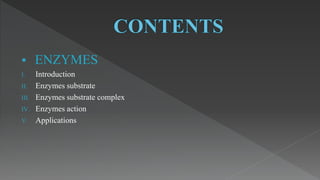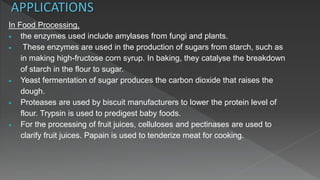This document summarizes enzymes and their functions. It defines enzymes as biological catalysts that accelerate chemical reactions and lower activation energy. Most enzymes are proteins that derive catalytic properties from their 3D structure. The molecules enzymes act upon are called substrates. Enzymes and substrates bind to form enzyme-substrate complexes, and the enzyme then catalyzes the reaction of the substrate into a product. Enzymes are not consumed in reactions and can catalyze reactions millions of times. Examples of enzyme uses include breaking down starch in food processing and beer production, and curdling milk in cheesemaking.









